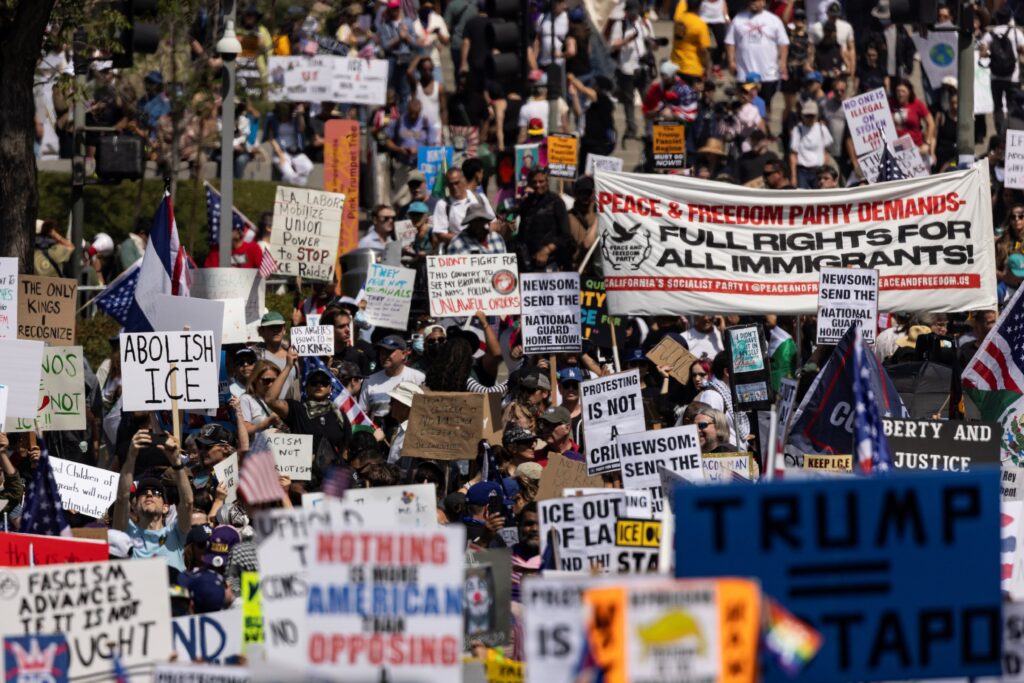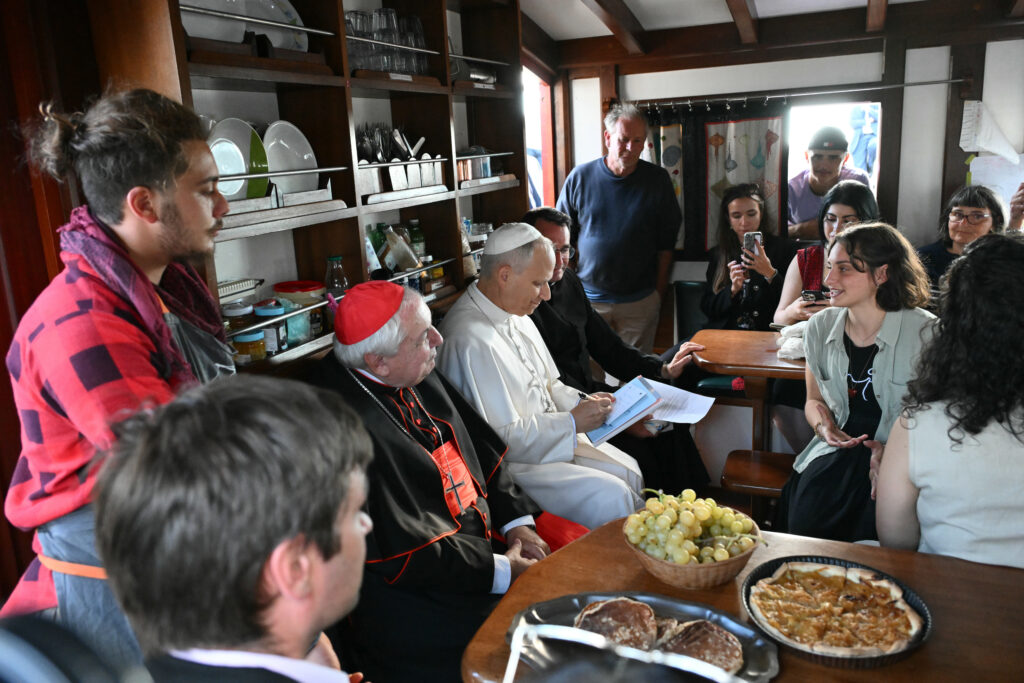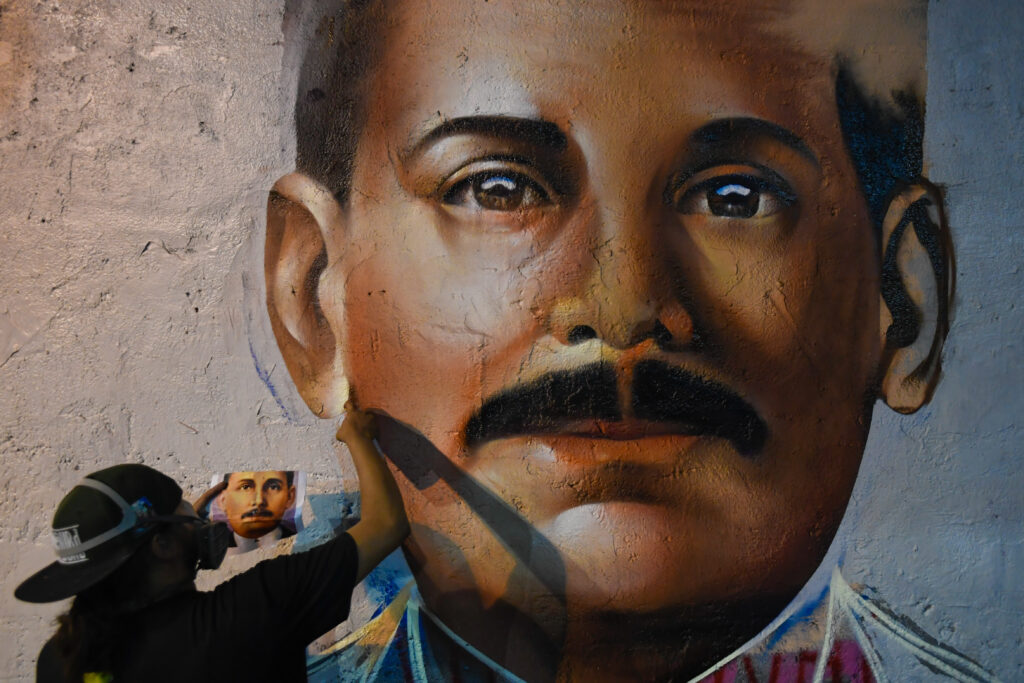Des millions d’Américains attendus pour défiler contre Trump
Des millions de personnes doivent défiler samedi de New York à San Francisco contre la politique jugée autoritaire de Donald Trump, lors d’une journée de mobilisation d’ores et déjà diabolisée par la droite, qui fustige un mouvement “de haine contre l’Amérique”.”Le président pense que son pouvoir est absolu. Mais en Amérique, nous n’avons pas de rois et nous ne céderons pas face au chaos, à la corruption et à la cruauté”, affiche comme mot d’ordre le mouvement “No Kings” (“Pas de Rois”) à l’appel de ces manifestations.Plus de 2.700 rassemblements sont prévus dans la journée, dans les grandes villes américaines comme dans des bourgades d’Etats républicains… ainsi qu’à proximité de la résidence Mar-a-Lago du président en Floride, où il passe le week-end.Les organisateurs disent s’attendre à plusieurs millions de participants.Mi-juin, une première journée de mobilisation organisée par le même collectif qui regroupe quelque 300 associations avait rassemblé des millions de personnes de tout âge, la plus grande contestation depuis le retour du républicain à la Maison Blanche.Le même jour, Donald Trump avait fêté son 79e anniversaire avec une parade militaire en grande pompe dans les rues de la capitale américaine.- “Terroriste” -Lui qui avait menacé en juin de répondre aux manifestants avec une “très grande force” a sobrement commenté cette semaine sur Fox News: “ils me qualifient de roi. Je ne suis pas un roi.” Plusieurs figures de son parti ont elles dénoncé avec virulence les manifestations à venir, allant jusqu’à les apparenter à du terrorisme.Parlant d’une “mobilisation haineuse contre l’Amérique”, le chef républicain de la Chambre des représentants Mike Johnson a lancé: “je parie que vous verrez des partisans du Hamas et des antifas”, en référence à cette mouvance politique récemment classée comme “organisation terroriste” par le président.L’élu du Minnesota Tom Emmer a lui accusé les démocrates d’avoir cédé à “l’aile terroriste de leur parti”.”Ce mouvement va jouer un rôle déterminant pour l’avenir de l’Amérique donc je comprends qu’ils soient nerveux”, a répliqué vendredi Glenn Ivey auprès de l’AFP, élu démocrate du Maryland, ajoutant qu’il y participerait.Face aux “abus de pouvoir de Donald Trump et de ses alliés”, “nous ne nous laisserons pas réduire au silence”, avait auparavant assuré une dirigeante de l’importante organisation de défense des droits civiques et des libertés publiques ACLU, Deirdre Schifeling, co-organisant cette mobilisation.- “Non violente” -L’appel à manifester a notamment été relayé par la star d’Hollywood Robert De Niro, qui a appelé dans une vidéo ses concitoyens à se soulever “de manière non violente” contre le “roi Donald Trump”.Depuis son retour au pouvoir en janvier, Donald Trump a bouleversé l’équilibre démocratique américain, empiétant sur les pouvoirs du Congrès et des Etats et menaçant ses opposants de représailles judiciaires.Usant d’une rhétorique de plus en plus belliqueuse, le républicain a déployé des militaires dans plusieurs fiefs démocrates pour selon lui lutter contre l’immigration illégale et la criminalité et a récemment exhorté les généraux américains à se mobiliser contre l'”ennemi de l’intérieur”.Des rassemblements se tiendront samedi dans les villes où il a envoyé la Garde nationale comme à Washington ou Chicago ou dans celles où il envisage de le faire, comme à Boston et La Nouvelle-Orléans.La précédente journée de mobilisation avait notamment rassemblé des célébrités, comme l’acteur Mark Ruffalo et l’humoriste Jimmy Kimmel – dont le talk-show a ensuite été temporairement suspendu sous la pression du gouvernement Trump.Des mobilisations sont également prévues au Canada, comme à Toronto, Vancouver et Ottawa.






